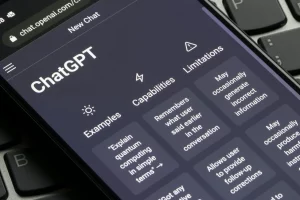Accusations, insults, allegations – with these four counterattack tools you can react cleverly to verbal attacks without getting involved.
Counter Tool 1: Ask Questions
Verbal attack means stress – and the pressure robs us of the calmness to respond quickly. A question forces the verbal attacker to explain himself/herself. “So, you pass the ball back to the abuser and buy some time,” explains executive coach Frederik Hümmeke in his book “Handling Shit”.
The basic form of the question is “What do you mean exactly?” Example: an employee declares in a meeting, “The way you’re going to do this, you’re going to completely drive the project into the wall.” – “What do you mean exactly?”
Either the employee now explains which factual arguments lead him to his assessment. Or he just repeats the objection. “Then it becomes clear for everyone in the meeting that his objection has no rhyme or reason because otherwise, he would argue objectively.”
The advanced version of this countering tool is to use an objective question right after your wildcard. For example, with questions such as:
- “What exactly do you see as critical at the moment?”
- “What kind of solution would you propose?”
- “If you were in my shoes, what would you advise me to do in response to this comment?”
According to Hümmeke, the important thing with this tool is not to ask questions which the other person can answer yes or no. “Otherwise, the ball would be right back in your field,” says the leadership trainer. Open-ended questions that start with who, how, when, for what, and in what way are ideal, he says.
Counter Tool 2: Request Proof
This tool urges verbal attackers to prove their point. Example: A business partner complains, “Really – nothing you do meets our requirements in any way.” Possible evidence request: “That’s an interesting assumption. What concrete evidence do you have to support it?”
This tool is also used to buy you some time. “At the same time, with the help of the evidence request, you point out that the objection was pointless – and also take over the authority to criticism” explains Hümmeke.
In most cases, verbal attackers then start to flounder. If they then quickly formulate evidence, Hümmeke continues, the evidence is often so weak that you can reject it. For example, with the explanation that the arguments were not convincing.
But what do you do if the other party is well prepared and has well-founded evidence at hand? “Then dragging your feet is recommended,” says Hümmeke. “Ask for time to take a close look at the issues and be able to examine them.”
Counter Tool 3: The Key Word
According to Hümmeke, this tool is the easiest to confidently counter objections. To do this, pick a word – and use that word as a short counter-question. Example: An angry customer asks on the phone “Why do you always deliver my goods too late?” Counter question: “Always?”
Not only the keyword tool buys you time, but it also puts the verbal attacker in the position of having to explain himself. “It works outstandingly well with killer phrases like ‘always,’ ‘every time,’ ‘exclusively,’ or with exaggerations like ‘for the thousandth time,'” says Hümmeke. “Because then you don’t even have to think about which term to choose, you just throw the killer phrase back.”
Important: Be prepared for the verbal attacker to confirm the keyword, such as saying, “Yes, exactly! Always!” In such cases, Hümmeke advises using the first counter tool, a question – like this: “What do you mean exactly?” Or else use the second counter tool to request evidence. Like this: “Always? Then surely you can give me some examples?” Both force your verbal attacker to be more specific. In most cases, says Hümmeke, not much comes back.
Counter Tool 4: Verbalization
Verbalization is used to reveal unspoken issues in the room. This tool is perfect for countering objections when the problem behind them is presumably on an emotional level. Example: an employee declares in a performance review, “This kind of talk here is total crap.” Possible verbalization: “I have the feeling that there is a certain frustration that is coming up here now. What are the issues that we should be working on?”
Advantage: You can use this tool to describe your perspective without making it look like an attack. At the same time, you address the emotional level – and bring the conversation back to the factual level. According to Hümmeke, this tool is ideal for getting ahead in meetings where people beat around the bush.
Read More:
⇛ 5 Ideas That Can Help You Calm Your Social Anxiety
⇛ How To Become A Better Judge Of Character?
⇛ 5 Body Language Mistakes You Should Avoid At Work













